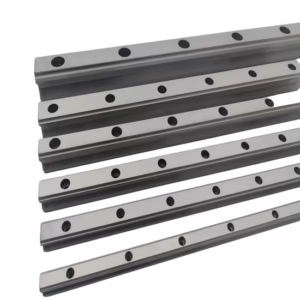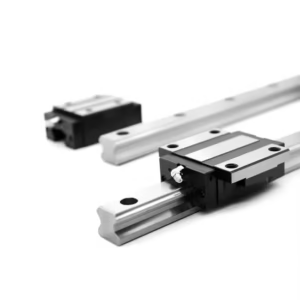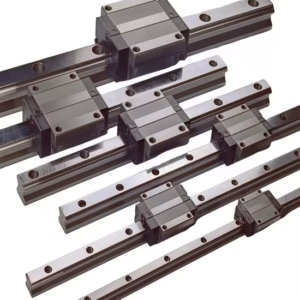Ball bearing linear systems are essential components in precision engineering and automation. They enable smooth, low-friction linear motion for a wide range of industrial, medical, and consumer applications. From CNC machines and 3D printers to robotic systems and laboratory equipment, ball bearing linear systems provide accuracy, reliability, and efficiency in linear motion applications.
This article explores the fundamental aspects of ball bearing linear systems, including their components, types, design principles, materials, benefits, applications, installation, maintenance, and troubleshooting. By the end of this guide, readers will understand how these systems work and how to optimize their performance for various applications.
Table of Contents
What Are Ball Bearing Linear Systems?
Components of Ball Bearing Linear Systems
Types of Ball Bearing Linear Systems
Design Principles and Mechanics
Materials Used in Ball Bearing Linear Systems
Advantages of Ball Bearing Linear Systems
Applications Across Industries
Selection Criteria for Ball Bearing Linear Systems
Installation and Alignment
Maintenance and Lubrication
Common Issues and Troubleshooting
Innovations and Future Trends
Frequently Asked Questions
Conclusion
1. What Are Ball Bearing Linear Systems?
Ball bearing linear systems are mechanical devices designed to provide smooth and precise linear motion along a fixed path. They consist of a rail and a moving carriage or slider, which incorporates ball bearings to reduce friction. These systems can handle high loads while maintaining accuracy and repeatability.
The main function of ball bearing linear systems is to minimize resistance and wear while ensuring consistent motion. They are widely used in high-precision equipment where smooth, accurate, and durable linear movement is critical.
2. Components of Ball Bearing Linear Systems
A typical ball bearing linear system consists of the following key components:
2.1 Rail
The rail is the fixed guide on which the carriage moves. It is precision-ground and hardened to provide durability and smooth motion. Rails may come in various shapes, including square, rectangular, or round profiles.
2.2 Carriage or Slider
The carriage is the moving element that travels along the rail. It contains ball bearing cages or recirculating ball mechanisms that reduce friction. Carriages are designed to evenly distribute loads and maintain alignment.
2.3 Ball Bearings
Ball bearings are the rolling elements that circulate inside the carriage or between the carriage and rail. They provide low friction, smooth motion, and high load-carrying capacity.
2.4 End Caps and Seals
End caps prevent ball bearings from falling out, while seals protect the system from dust, debris, and other contaminants, ensuring longevity and reliable operation.
2.5 Lubrication Ports
Many ball bearing linear systems include ports or channels for grease or oil to reduce friction and wear, extending the system’s operational life.
3. Types of Ball Bearing Linear Systems
Ball bearing linear systems are categorized by design, load capacity, and intended application:
3.1 Profile Rail Ball Bearings
Design: Rectangular rail with high-precision carriage.
Use: Heavy-duty and high-precision applications like CNC machines.
Advantages: High rigidity, excellent load distribution, and precise motion.
3.2 Round Rail Ball Bearings
Design: Cylindrical rail with a recirculating ball mechanism.
Use: Compact equipment, light to medium loads.
Advantages: Simple installation, smaller footprint, smooth motion.
3.3 Miniature Ball Bearing Linear Systems
Design: Compact rails and carriages for small-scale applications.
Use: Laboratory instruments, medical devices, micro-assembly.
Advantages: High precision in a limited space.
3.4 Cross-Roller Ball Bearings
Design: Ball bearings arranged perpendicularly to handle multi-directional loads.
Use: Specialized robotics, precision rotary tables.
Advantages: Handles combined radial, axial, and moment loads efficiently.
4. Design Principles and Mechanics
4.1 Recirculation Mechanism
Ball bearings in linear systems often recirculate within the carriage, allowing continuous motion without friction build-up. Recirculation mechanisms include:
End caps with return channels
Caged ball circuits
Inline ball tracks
4.2 Load Distribution
Ball bearing linear systems are designed to distribute loads evenly across the rail. This reduces stress on individual balls and increases system lifespan.
4.3 Friction Reduction
The rolling action of balls significantly reduces friction compared to sliding systems. This enables smooth motion, higher speeds, and lower energy consumption.
4.4 Rigidity and Stability
Profiled rails provide high rigidity, reducing deflection under load. This is crucial for high-precision machining, medical equipment, and robotics.
5. Materials Used in Ball Bearing Linear Systems
Material choice affects performance, corrosion resistance, and lifespan.
5.1 Carbon Steel
Strong and cost-effective
Heat-treated for hardness
5.2 Stainless Steel
Corrosion-resistant, ideal for humid, wet, or chemical environments
Common in medical, food, and outdoor applications
5.3 Aluminum
Lightweight and corrosion-resistant
Suitable for portable or aerospace applications
5.4 Engineering Plastics
Used for cages and seals
Reduce noise and friction, suitable for cleanroom applications
6. Advantages of Ball Bearing Linear Systems
Ball bearing linear systems offer numerous benefits:
High Precision: Ensures accurate, repeatable motion.
Low Friction: Smooth movement with minimal wear.
High Load Capacity: Handles axial, radial, and moment loads effectively.
Durability: Long operational life with proper maintenance.
Versatility: Suitable for various industrial and medical applications.
Smooth Motion: Minimal vibration and noise improve performance.
7. Applications Across Industries
Ball bearing linear systems are integral to multiple industries:
7.1 CNC Machines
Guides cutting tools, tables, and spindles with high precision.
7.2 3D Printers
Ensures smooth and accurate motion of print heads and build plates.
7.3 Robotics
Provides precise linear motion for arms, grippers, and automated assemblies.
7.4 Industrial Automation
Used in conveyor systems, pick-and-place machinery, and packaging equipment.
7.5 Medical Devices
Supports precision movement in imaging equipment, laboratory instruments, and surgical robots.
7.6 Aerospace
Used in flight simulators, satellite positioning systems, and aerospace manufacturing tools.
8. Selection Criteria for Ball Bearing Linear Systems
When selecting a ball bearing linear system, consider:
Load Capacity: Both static and dynamic loads.
Precision and Accuracy: Tolerance, repeatability, and smoothness.
Speed Requirements: High-speed operations may require special ball bearings.
Environmental Conditions: Temperature, humidity, dust, and chemicals.
Size Constraints: Rail and carriage dimensions.
Maintenance Requirements: Consider lubrication frequency and ease of replacement.
9. Installation and Alignment
Correct installation is critical for optimal performance:
9.1 Surface Preparation
Mounting surfaces should be flat, clean, and rigid.
9.2 Alignment
Rails must be parallel and straight. Misalignment causes uneven wear and reduced precision.
9.3 Fastening
Apply correct torque; avoid over-tightening, which can distort the system.
9.4 Testing
Test smooth movement under load before full operation.
10. Maintenance and Lubrication
Regular maintenance prolongs life:
Cleaning: Remove dust, debris, and contaminants.
Lubrication: Use compatible grease or oil.
Inspection: Check for wear, corrosion, or damage.
Replacement: Replace worn or damaged components promptly.
11. Common Issues and Troubleshooting
Common problems include:
Noise or Vibration: Often due to misalignment or poor lubrication.
Sticking or Jamming: Caused by dirt, debris, or damaged balls.
Excessive Wear: Overloading or contamination.
Corrosion: Occurs in wet, humid, or chemically aggressive environments.
12. Innovations and Future Trends
Recent innovations in ball bearing linear systems include:
High-Speed Designs: For ultra-fast automation applications.
Compact, Lightweight Systems: Maintaining load capacity while reducing weight.
Integrated Sensors: For load monitoring, motion tracking, and predictive maintenance.
Advanced Materials and Coatings: Reduced friction, enhanced durability, corrosion resistance.
13. Frequently Asked Questions
Q1: What is the main difference between ball bearing linear and roller linear systems?
A1: Ball bearing linear systems use recirculating balls for smooth motion, ideal for precision and moderate loads. Roller systems handle heavier loads but may have slightly lower precision.
Q2: Can ball bearing linear systems be used outdoors?
A2: Stainless steel or coated systems are suitable for outdoor use and humid environments.
Q3: How often should these systems be lubricated?
A3: Depending on load and speed, lubrication may be needed weekly to monthly.
Q4: What is the lifespan of a ball bearing linear system?
A4: With proper installation, alignment, and maintenance, ball bearing linear systems can last many years.
14. Conclusion
Ball bearing linear systems are vital in modern machinery, offering high precision, low friction, and reliable linear motion. Proper selection, installation, and maintenance optimize performance, extend system life, and reduce downtime. They are indispensable in CNC machinery, robotics, medical devices, automation, and aerospace applications.
By understanding the components, types, materials, benefits, and maintenance requirements, engineers and technicians can leverage ball bearing linear systems to improve efficiency, precision, and reliability in their operations.




